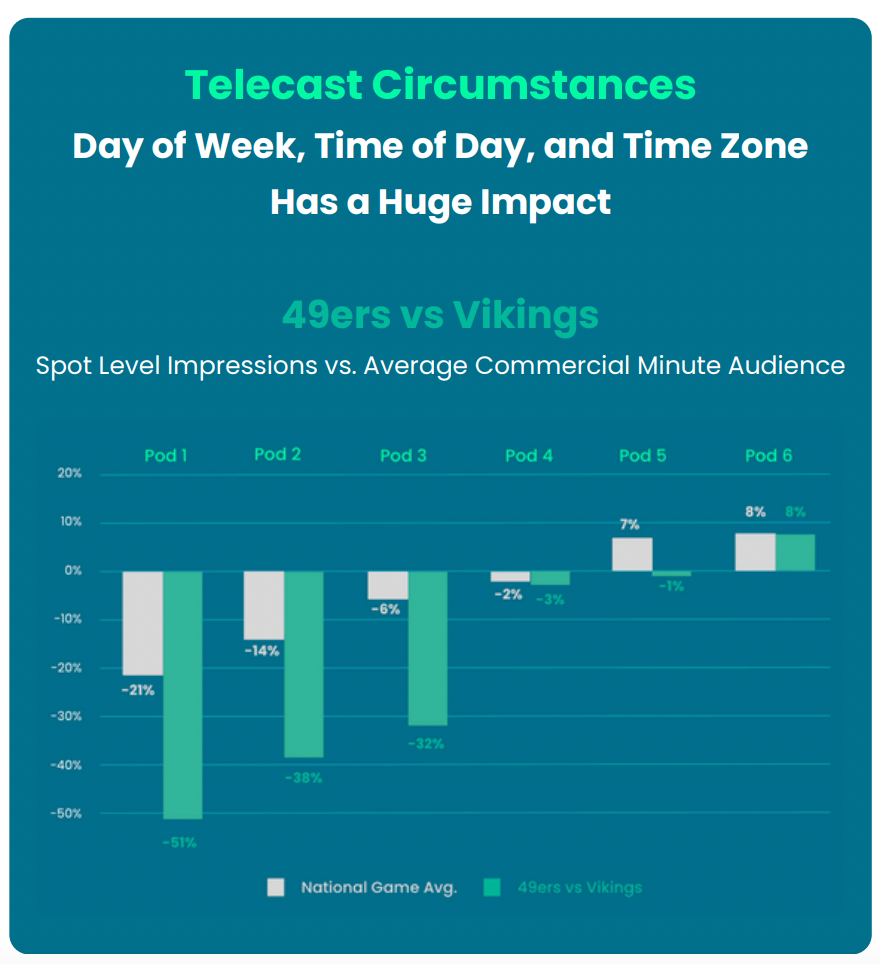Time Zones' Impact On Sports' TV Audience Delivery

Time zones play a huge role in TV audience delivery – especially when it comes to live sports, where delayed viewing (from game start) is less prevalent and fan base locations need to be factored in. The level of impact is different from game to game and team to team, and when you're comparing average commercial-minute (ACM) audiences vs. spot-level impressions (SLI), as iSpot dove into further with its recent report, Every Second Counts.
- Last fall, the 49ers and Vikings played a Monday night game in primetime in the Eastern and Central time zones, but it was a late afternoon weekday start on the West Coast (and many of the Niners' Bay Area-based fans).
- Not surprisingly, the game’s viewership started abnormally low for the NFL, and ads in the first several pods received much smaller than normal audiences – so the game's ACM was dramatically overvalued relative to actual spot delivery in those early pods.
- SLI showed pod 1 underdelivered by 51%, pod 2 was down 38% and pod 3 was off by 32%, before the gap closed and it right-sized by pod 6... but that doesn't do any favors for the game's early advertisers (who would usually be rewarded by strong early tune-in during NFL games).
- The MNF goes to show that being a good team with a strong audience doesn't mean as much if the timing isn't right; while the Vikings/Niners game was middle-of-the-pack by Monday Night audiences last year, San Francisco played in two of the top four Sunday Night Football games by reach, when more local fans were available to tune in.

